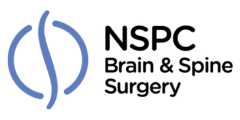Sponsor Post:
Treating a Vestibular Schwannoma: Surgery vs Radiosurgery
By Philip E. Stieg, PhD, MD
Neurosurgeon-in-Chief, New York - Presbyterian/Weill Cornell Medical Center
Director, Weill Cornell Medicine Brain and Spine Center
Patients diagnosed with a vestibular schwannoma are often faced with the difficult choice of how (and even whether) to treat it. Vestibular schwannoma is the more precise name for tumors of the acoustic nerve and is now being used more often to characterize acoustic neuromas.
A patient diagnosed with a vestibular schwannoma may be advised to leave it alone, under regular monitoring, if the tumor is not growing or posing any threat to surrounding nerves or tissue, or if the patient is older and surgery is deemed too great a risk. For these patients, routine monitoring of the tumor is often sufficient.
For those patients who are advised to have treatment, the two basic options are surgical removal or stereotactic radiosurgery (which is performed using a Gamma Knife, CyberKnife, proton beams, or linear accelerator). Both treatments are highly effective, but they each have pros and cons to be considered before a patient chooses an option. Patients should consider those pros and cons, and discuss their own individual situations with their doctors, before making a choice.
Microsurgery: Surgery is often the preferred treatment for vestibular schwannoma since it can be used on a tumor of any size. The surgery to remove a vestibular schwannoma is extremely delicate and may take several hours to complete, with the patient under general anesthesia. The neurosurgeon will choose from several possible surgical approaches depending on the size and location of the tumor and the age and health of the patient. The patient usually stays in the hospital for a few days and recovers fully in a few weeks.
Stereotactic radiosurgery (SRS): SRS is often chosen by patients who are not good candidates for surgery, or who prefer a noninvasive approach. Neurosurgeons who specialize in stereotactic radiosurgery can use these highly targeted radiation beams, directed at the tumor from multiple angles, to treat small vestibular schwannomas. The patient is awake during the treatment, which is done as an outpatient procedure, and recovery is rapid.
What You Need to Know
- Surgery removes all or most of the tumor, usually producing immediate relief of symptoms; stereotactic radiosurgery “zaps” the tumor and causes it to shrink over the following months, so relief is not immediate.
- Surgery carries the usual risks of any surgical procedure, including infections and poor reactions to anesthesia.
- Stereotactic radiation carries the minimal risk of exposure to radiation.
- Stereotactic radiosurgery is not usually effective against larger tumors, which require open surgery.
- Preservation of hearing is variable with both surgery and stereotactic radiation and needs to be thoroughly discussed between patient and doctor.
- The facial nerve, responsible for facial expression, travels next to the vestibular nerve and is at risk of injury with surgery or stereotactic radiosurgery. This risk is based on the size and location of the tumor, along with the radiation dose, and needs to be discussed between patient and doctor.
- A vestibular schwannoma can cause partial hearing loss with or without treatment; surgical treatment may worsen the hearing loss if the cochlear nerve is damaged. Highly skilled surgeons can reduce that risk by choosing the optimal surgical approach, especially if the tumor is small. In patients where the cochlear nerve is intact after treatment, a cochlear implant may be used to address hearing loss.
- Neither surgery nor stereotactic radiosurgery is guaranteed to reverse hearing loss already caused by the tumor.
- A combination approach may be appropriate for large tumors. A neurosurgeon may be able to remove a majority of the tumor, with follow-up stereotactic radiosurgery to kill off the remaining tumor tissue over time.
A patient should evaluate all of the above considerations in light of his or her own individual circumstances. For any patient with a vestibular schwannoma, treatment at a high-volume major medical center is advisable so that the widest range of options is available, with experts skilled at the advanced techniques and procedures required for best results.
Note: In no case does ANA endorse any commercial product, physician, surgeon, medical procedure, medical institution or its staff.



































